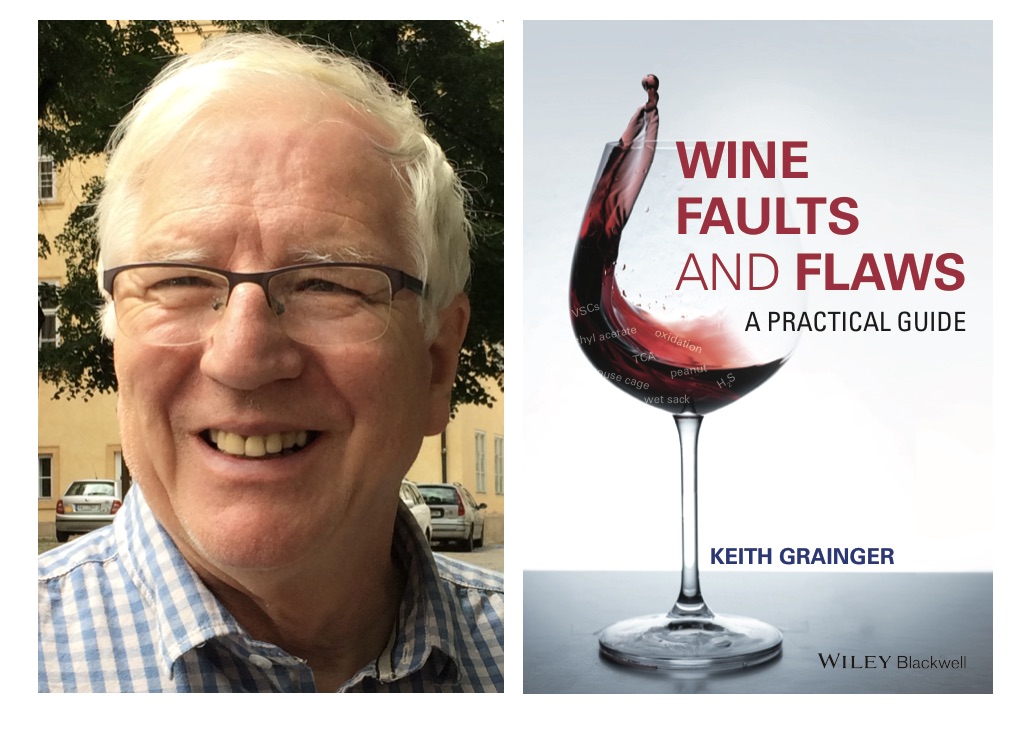The first time I met Keith Grainger was on a Circle trip to Sicily in 2013, and what struck me most was his fascination for bottling lines. Every winery we went to, while the other wine writers were busy looking at the vineyard views or asking to taste older vintages, Keith was scribbling notes and asking questions about sparging and sanitisation that went way over my head. Keith has long been fascinated by the nuts and bolts of wine production and all the flaws and faults that can occur along the way.
It’s with this unquenchable thirst for more practical knowledge that Keith embarked on his fourth wine book, Wine Faults and Flaws: A Practical Guide. Following on from the success of his award-winning third book, Wine Production and Quality, co-authored with Hazel Tattersall, this in-depth technical guide goes into great detail about all the things that can go wrong with winemaking and storage — from microbiological faults to chemical faults, premox and climate-change sensitive topics, including smoke taint.
Although Keith suggests in the introduction that you might like to read this book from cover to cover, I think it will most likely find its place as an important reference work for professionals and ultimately as a bit of a manual for winemakers. It’s a book for readers with a good base knowledge of wine and will undoubtedly appeal to professionals most of all.
The chapter on ‘Wine Tasting’ is focused on how to detect the myriad of flaws and faults in wines and sheds light on differing abilities to spot them. Did you know a supertaster’s tongue is endowed with a higher density of fungiform papillae? Neither did I. But I was also intrigued to learn that even genetically-blessed supertasters can be blind to certain compounds.
The majority of the book is focused on the practical application of diagnosing flaws and faults, and on how you can prevent or possibly treat such ‘imperfections’. Rather than condoning all flaws and faults, Keith also looks at the level of tolerance of them in the wine world. He calls the legendary 1947 Château Cheval Blanc “the greatest faulty wine ever made” and includes praises of the wine from renowned critics, including Jancis Robinson MW and Robert Parker, despite its “stratospheric level of volatile acidity (together with 5g of residual sugar resulting from a stuck fermentation)”. Although there’s little doubt in my mind from this book that Keith isn’t a fan of the ‘natural wine’ movement, he puts flaws and faults into context and brings in real life examples, which makes this very scientific topic matter more accessible to laymen like myself.
I have to be honest, the technicalities of faults and flaws in wines still goes over my head. But I feel confident that, as a wine professional and MW student, that Wine Faults and Flaws: A Practical Guide will be an invaluable resource to dip into when I’m feeling a bit lost.
Understanding flaws and faults certainly isn’t romantic, but it’s an integral part in making the final wine enjoyable. After all, as he affirms in the Preface, we are all “in the business of selling enjoyment and entertainment… Nobody has to drink wine — it is a beverage to be savoured.” And I’m sure that this book will be savoured by many winemakers and wine students for years to come.
Review by Amanda Barnes
Wine Faults and Flaws: A Practical Guide is published by Wiley and available online for £99 as a hardback.

